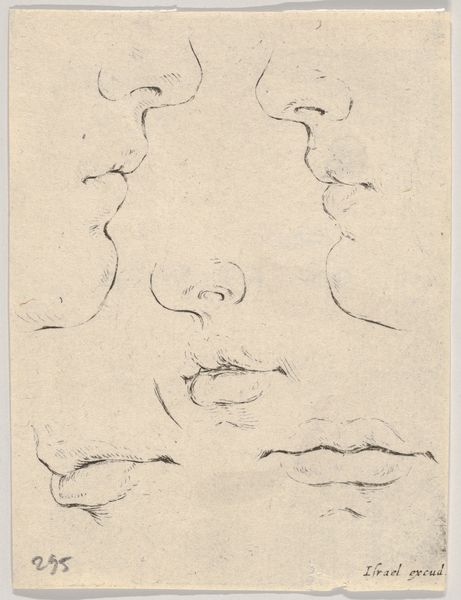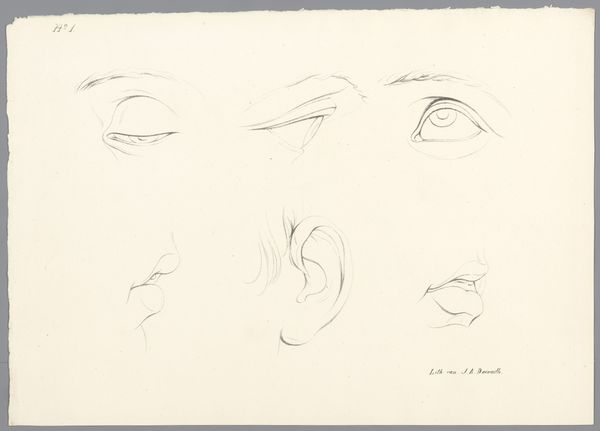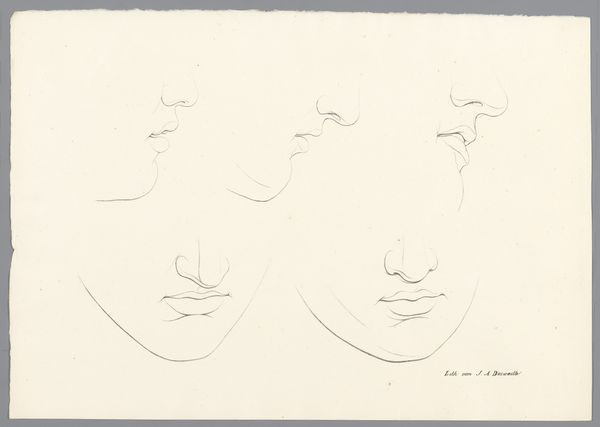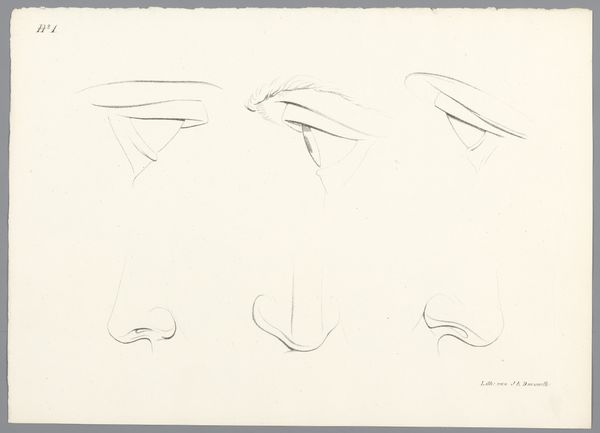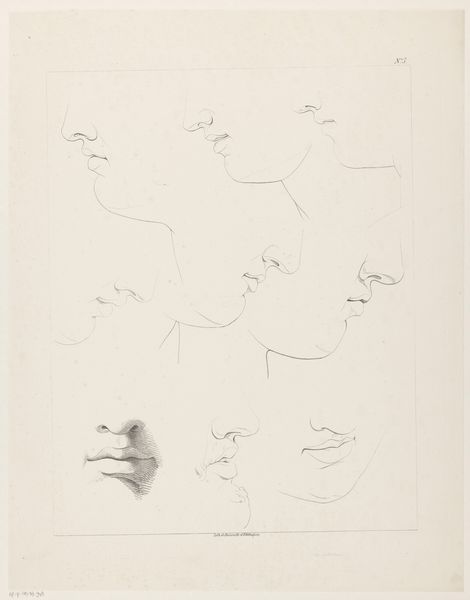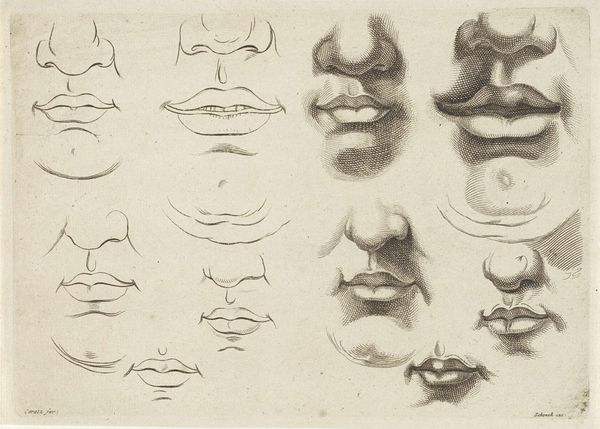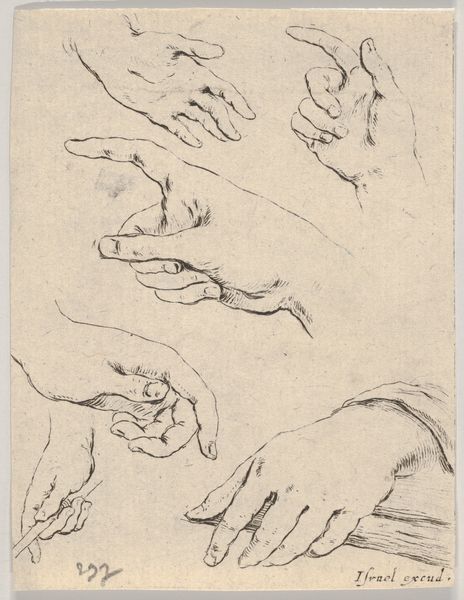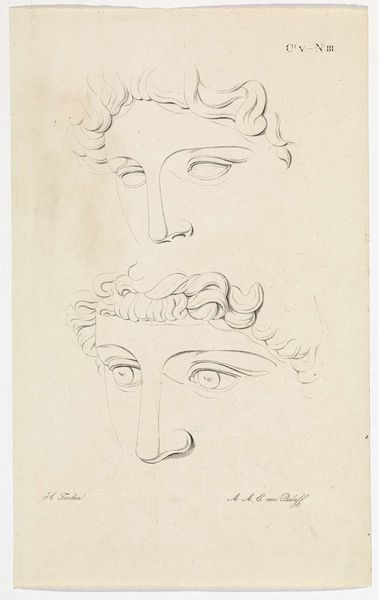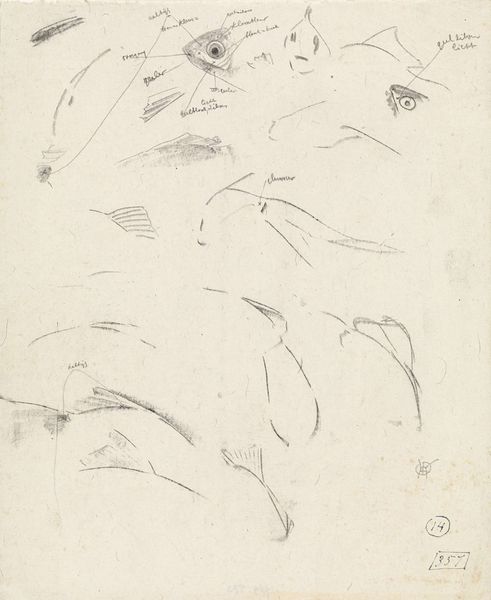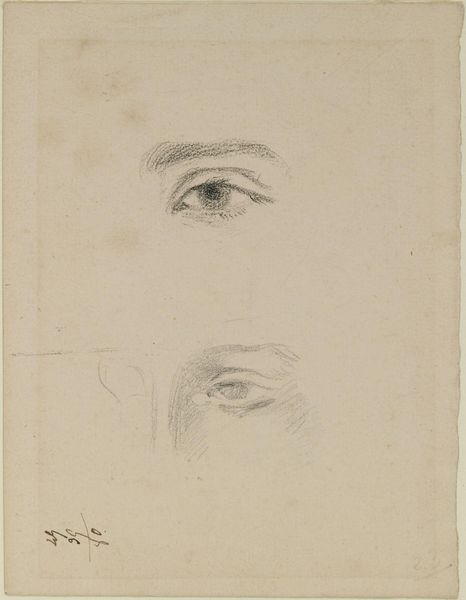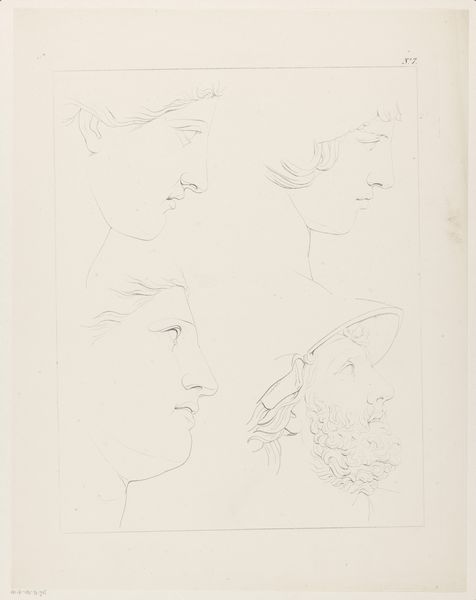
drawing, print, etching, engraving
#
portrait
#
drawing
#
amateur sketch
#
thin stroke sketch
#
baroque
# print
#
etching
#
pencil sketch
#
incomplete sketchy
#
figuration
#
idea generation sketch
#
sketchwork
#
rough sketch
#
line
#
sketchbook drawing
#
pencil work
#
engraving
#
initial sketch
Dimensions: height 83 mm, width 65 mm
Copyright: Rijks Museum: Open Domain
Curator: We’re standing before “Three Noses and Five Mouths,” an etching by Stefano della Bella, created sometime between 1620 and 1664. It’s held here at the Rijksmuseum. Editor: My first thought is that this feels immediate, like a fleeting glimpse into the artist’s process. There’s a rawness in the sketched lines. Curator: Indeed. The disembodied features carry a peculiar weight. Noses and mouths are, after all, instruments of expression, communication. Placed together, they evoke fragmented conversations, whispers, perhaps even judgement. What are your thoughts on the materiality? Editor: Well, it's an etching, so we're dealing with acid, metal, pressure – a fairly involved process for something that appears so spontaneous. The fine lines achieved through etching create a delicate texture, belying the industrial labor behind its production. It makes you wonder about the economics of printmaking at the time. Curator: It raises an interesting question: did this quick, light style allow for quicker turnaround and cheaper production in della Bella’s workshop? Maybe opening up prints for a broader customer base? But the baroque line is undeniable too. Those looping curves around the lips are sensuous! The open mouth at the bottom has echoes of traditional depictions of ecstasy. Editor: Perhaps! Or maybe the artist was just warming up. There is, on the bottom corner, some illegible scratching--notes left after the actual art piece itself! That says it all for me--this isn't about deep messages so much as craft and raw process. We need to examine the economic underpinnings of artistic production at this moment to fully grasp the artwork's meaning! Curator: I can definitely respect that idea. It also evokes the study of physiognomy popular at the time, linking facial features to character. Editor: Interesting, but for me, I see the social and material relations! It forces us to ask—whose labour created it? What market forces were at play? It shows artistic creation at its most humble! Curator: I think the image resonates because it sits somewhere in between, as well as a record of art practices. Thanks to this little snapshot of Stefano della Bella’s artistry, both worlds coexist. Editor: Absolutely. A little glimpse into art production, for us to ponder about until this very day.
Comments
No comments
Be the first to comment and join the conversation on the ultimate creative platform.
